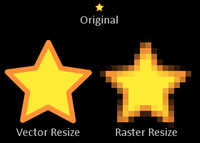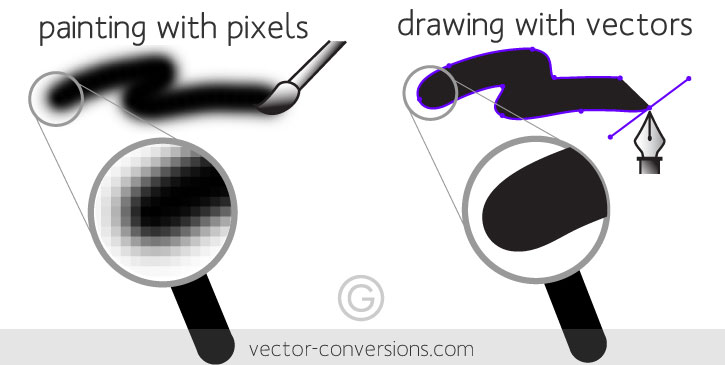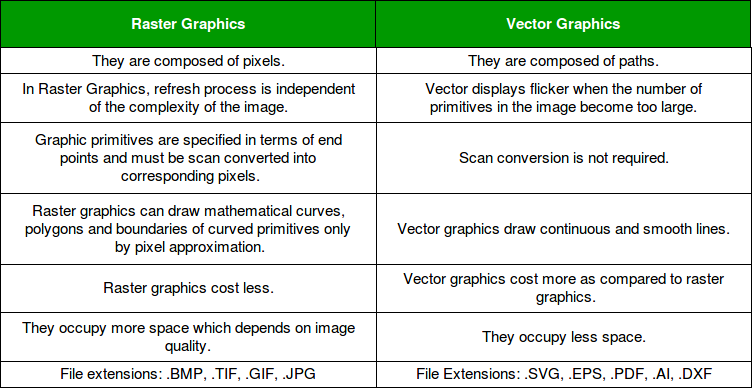


Popular vector file format extensions include: eps, ai and pdf. The designer’s preferred program for creating and editing vector files? Adobe Illustrator. The most common types of vector graphics? Fonts and logos. So whereas a raster image of a 1” x 1” square at 300 dpi will have 300 individuals pieces of information, a vector image will only contain four points, one for each corner the computer will uses math to “connect the dots” and fill in all of the missing information.
DIFFERENCE BETWEEN RASTER AND VECTOR PROFESSIONAL
But even professional designers, myself indluced, often use these two terms interchangeably.) ( Technically pixels refer to color blocks viewed on an electronic monitor where as dots refer to the ink dots on a printed piece. vector files (all while your client develops an über confused look on his face), just send ‘em the link to this easy-to-understand article instead.Ī raster graphic is an image made of hundreds (or thousands or millions) of tiny squares of color information, referred to as either pixels or dots. The next time you start blabbing on about the difference between raster vs. If you’re like me, the answer is about a bazillion.

DIFFERENCE BETWEEN RASTER AND VECTOR PDF
Vector graphics can always be imported in raster format, for example, as a jpg or png images, or left in a scalable format as an svg, ai, pdf * or eps files.How many times have you tried to explain to your client why the logo from their website won’t work on their trade show booth? The lines can also be resized and further worked on, for example, by adding surfaces as vector shapes in Adobe Illustrator or by bringing textures and landscapes under the vector lines in Photoshop. The lines of architectural modeling are always in vector format and can thus be scaled to the required size. However, using vector graphics to render organic shapes photorealistically is still a challenge. Highly processed vector graphics can even be used to create images resembling photography, especially when illustrating geometric shapes such as phones. Vector graphics are the primary form of a digital image used in graphic elements such as logos, typography, icons, infographics and illustrations. This is the main advantage of vector graphics compared to raster graphics. Vector graphics are based on mathematical formulas, which makes it infinitely scalable without loss of quality. Each vector path may have various properties such as values for stroke color, shape, curve, thickness, and fill. Vector graphics are two-dimensional lines and shapes based on lines formed between so-called anchor points, which determine the direction of the line that is formed between them called a vector path.


 0 kommentar(er)
0 kommentar(er)
